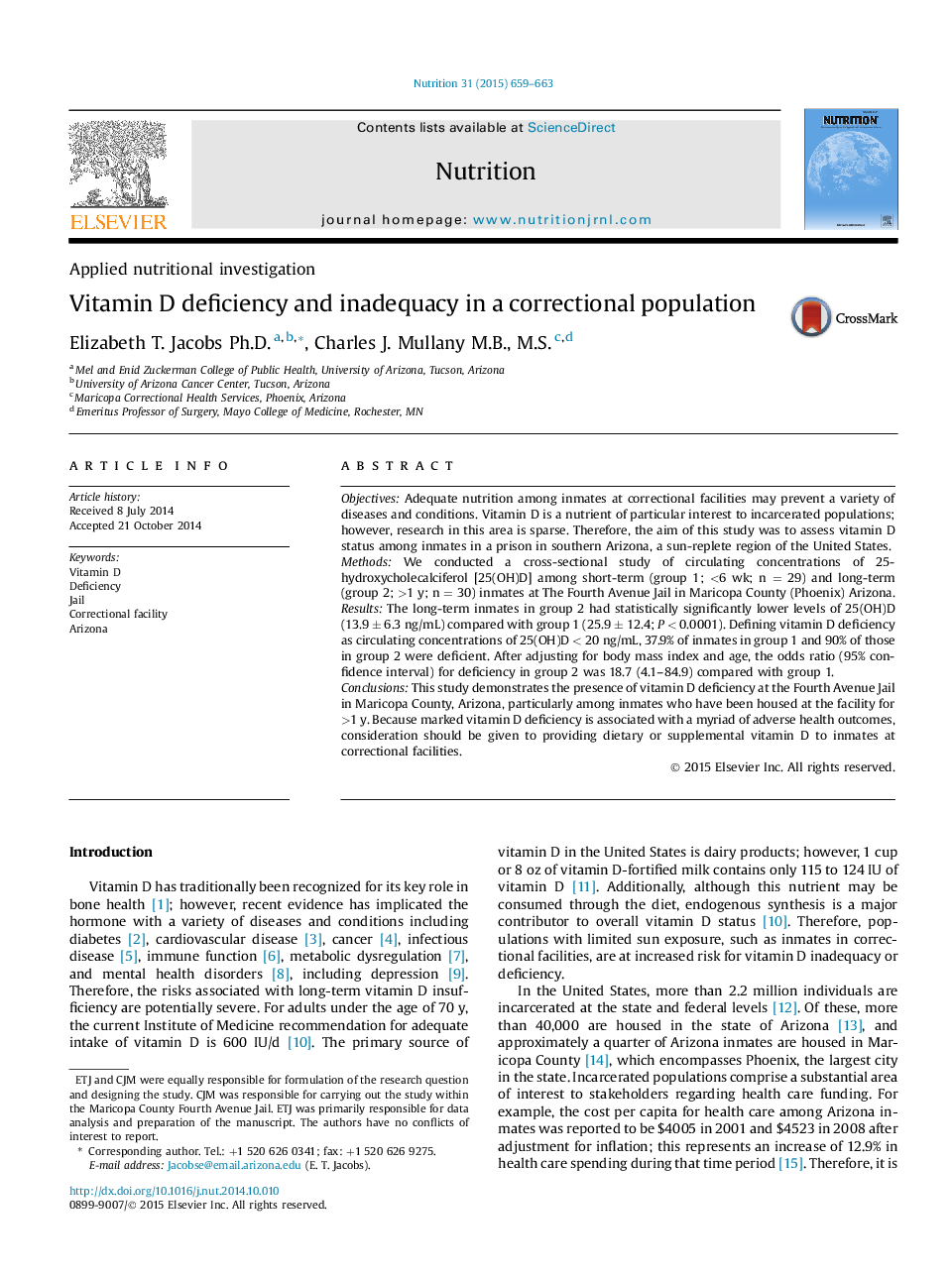| Article ID | Journal | Published Year | Pages | File Type |
|---|---|---|---|---|
| 6089063 | Nutrition | 2015 | 5 Pages |
â¢Challenges exist in studying nutrition among inmates at correctional facilities.â¢Vitamin D is of critical importance to inmates given the potential for reduced ultraviolet exposure.â¢In the present study, vitamin D deficiency was found to be present among inmates in a correctional facility located in a sun-replete area.â¢Measurement of inmates' 25-hydroxycholecalciferol status, and/or supplementation programs should be implemented at correctional facilities.
ObjectivesAdequate nutrition among inmates at correctional facilities may prevent a variety of diseases and conditions. Vitamin D is a nutrient of particular interest to incarcerated populations; however, research in this area is sparse. Therefore, the aim of this study was to assess vitamin D status among inmates in a prison in southern Arizona, a sun-replete region of the United States.MethodsWe conducted a cross-sectional study of circulating concentrations of 25-hydroxycholecalciferol [25(OH)D] among short-term (group 1; <6 wk; n = 29) and long-term (group 2; >1 y; n = 30) inmates at The Fourth Avenue Jail in Maricopa County (Phoenix) Arizona.ResultsThe long-term inmates in group 2 had statistically significantly lower levels of 25(OH)D (13.9 ± 6.3 ng/mL) compared with group 1 (25.9 ± 12.4; P < 0.0001). Defining vitamin D deficiency as circulating concentrations of 25(OH)D < 20 ng/mL, 37.9% of inmates in group 1 and 90% of those in group 2 were deficient. After adjusting for body mass index and age, the odds ratio (95% confidence interval) for deficiency in group 2 was 18.7 (4.1-84.9) compared with group 1.ConclusionsThis study demonstrates the presence of vitamin D deficiency at the Fourth Avenue Jail in Maricopa County, Arizona, particularly among inmates who have been housed at the facility for >1 y. Because marked vitamin D deficiency is associated with a myriad of adverse health outcomes, consideration should be given to providing dietary or supplemental vitamin D to inmates at correctional facilities.
